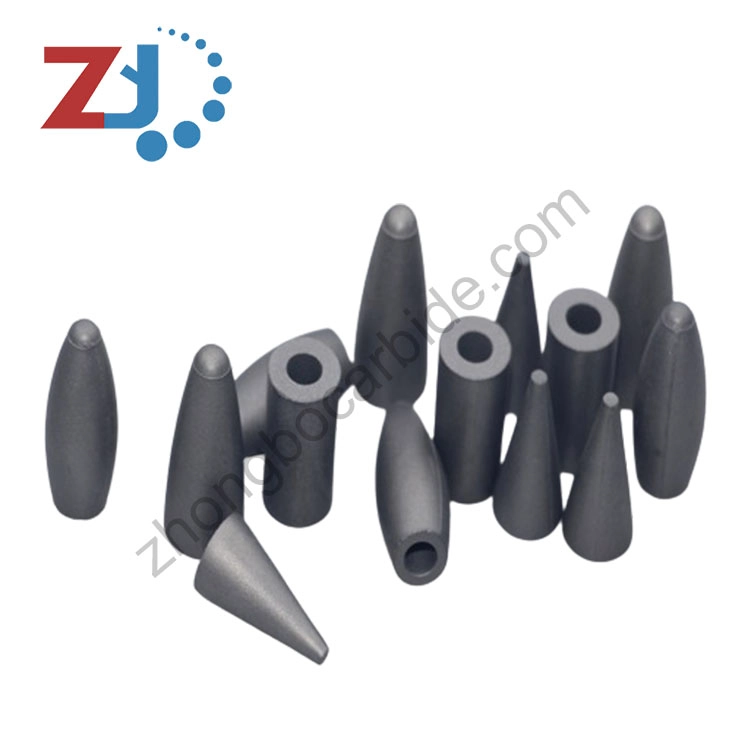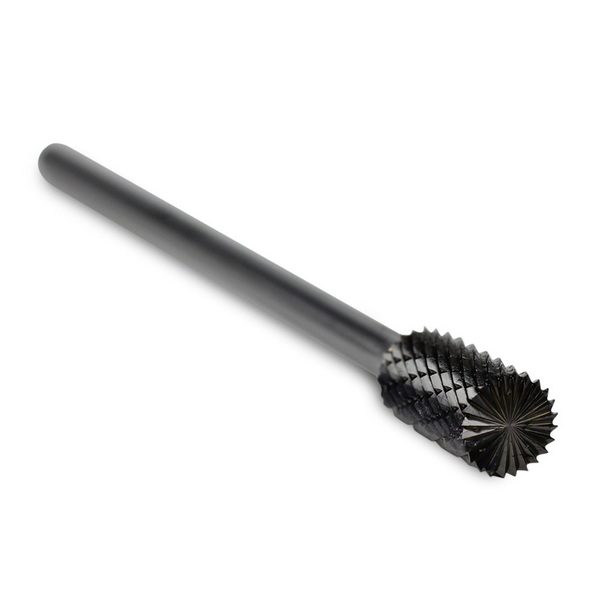Content Menu
● Introduction to Tungsten Carbide Burrs
>> Types of Tungsten Carbide Burrs
>> Advantages of Tungsten Carbide Burrs
● Sharpening Techniques for Tungsten Carbide Burrs
>> Using Diamond Wheels
>> Using Silicon Carbide Wheels
>> Safety Precautions
● Challenges in Sharpening Tungsten Carbide Burrs
● Advanced Techniques for Sharpening
>> Laser Sharpening
>> Electrochemical Grinding
● Maintenance and Storage
● Conclusion
● FAQ
>> 1. What is the best tool for sharpening tungsten carbide burrs?
>> 2. Can silicon carbide wheels be used for sharpening tungsten carbide?
>> 3. Why does tungsten carbide not form a burr during sharpening?
>> 4. What safety precautions should be taken when sharpening tungsten carbide burrs?
>> 5. How often should tungsten carbide burrs be sharpened?
● Citations:
Tungsten carbide burrs are renowned for their durability and versatility in various industrial and crafting applications. They are used for deburring, grinding, and shaping materials like metal, ceramic, and wood. However, over time, these burrs can become dull, necessitating sharpening to maintain their effectiveness. Sharpening tungsten carbide burrs requires specialized techniques and tools due to their hardness and composition. In this article, we will explore the methods and tools used for sharpening tungsten carbide burrs.

Introduction to Tungsten Carbide Burrs
Tungsten carbide burrs are made from a sintered mixture of tungsten carbide particles bonded with cobalt or other metals. This composition gives them exceptional hardness and wear resistance, making them ideal for demanding tasks. However, their hardness also makes them challenging to sharpen using conventional methods.
Types of Tungsten Carbide Burrs
Tungsten carbide burrs come in various shapes and sizes, each designed for specific applications:
- Ball Shaped Carbide Burrs: Useful for chamfering corners and working in recesses.
- Round Tree Carbide Burrs: Ideal for deburring internal corners and shaping curves.
- Inverted Cone Carbide Burrs: Suitable for chamfering hidden edges.
- Cylindrical Carbide Burrs: Often used for grinding and deburring flat surfaces.
Advantages of Tungsten Carbide Burrs
- Durability: They last longer than steel burrs, reducing the need for frequent replacements.
- Versatility: Suitable for a wide range of materials, including metals, ceramics, and wood.
- Precision: Allows for precise control over the grinding process.
Sharpening Techniques for Tungsten Carbide Burrs
Sharpening tungsten carbide burrs involves using high-speed diamond wheels or other superabrasives. Here are some techniques and tools used for sharpening:
Using Diamond Wheels
Diamond wheels are the most effective tools for sharpening tungsten carbide due to their superior hardness. These wheels can be mounted on a grinder or a tool and cutter grinder, which allows for precise control over the sharpening process.
Step-by-Step Process:
1. Preparation: Ensure the grinder is securely set up and the diamond wheel is properly mounted.
2. Positioning: Place the tungsten carbide burr against the diamond wheel, ensuring it is aligned with the desired sharpening angle.
3. Sharpening: Start the grinder and slowly move the burr against the wheel. Use light pressure to avoid damaging the burr or the wheel.
4. Cooling: Use a coolant to prevent overheating, which can damage the burr or the wheel.
Using Silicon Carbide Wheels
While not as effective as diamond wheels, silicon carbide wheels can be used for rough grinding tungsten carbide. They are softer and less expensive than diamond wheels but still provide a decent grinding action.
Step-by-Step Process:
1. Preparation: Mount the silicon carbide wheel on a grinder.
2. Positioning: Align the burr with the wheel, ensuring proper contact.
3. Rough Grinding: Use the silicon carbide wheel for initial rough grinding before switching to a diamond wheel for finer sharpening.
Safety Precautions
- Wear Protective Gear: Always wear safety glasses and gloves when working with power tools.
- Maintain Proper Ventilation: Ensure good airflow to prevent inhalation of dust particles.
- Use Coolant: Prevent overheating by using a coolant during the sharpening process.

Challenges in Sharpening Tungsten Carbide Burrs
Sharpening tungsten carbide burrs poses several challenges:
- Hardness: Tungsten carbide is extremely hard, requiring specialized tools like diamond wheels.
- Material Loss: The sharpening process can lead to material loss, which affects the burr's performance and lifespan.
- Edge Formation: Unlike steel, tungsten carbide does not form a burr during sharpening, making it difficult to achieve a sharp edge.
Advanced Techniques for Sharpening
For more precise control and to minimize material loss, advanced techniques can be employed:
Laser Sharpening
Laser sharpening is a modern method that uses high-energy laser beams to precisely remove material and sharpen the burr. This method offers high accuracy and minimal material loss but requires specialized equipment.
Electrochemical Grinding
Electrochemical grinding involves using an electrolyte solution to remove material from the burr. This method is less common but can be effective for certain applications.
Maintenance and Storage
Proper maintenance and storage of tungsten carbide burrs are crucial to extend their lifespan:
- Cleanliness: Regularly clean the burrs to remove debris and prevent corrosion.
- Storage: Store burrs in a dry place, away from direct sunlight and moisture.
- Inspection: Regularly inspect burrs for signs of wear and damage.
Conclusion
Sharpening tungsten carbide burrs is a complex process that requires careful technique and the right tools. Diamond wheels are the most effective for sharpening due to their hardness and ability to maintain a sharp edge. By following the steps outlined and using the appropriate safety precautions, you can effectively sharpen your tungsten carbide burrs and extend their lifespan.

FAQ
1. What is the best tool for sharpening tungsten carbide burrs?
The best tool for sharpening tungsten carbide burrs is a high-speed diamond wheel. Diamond is harder than tungsten carbide, allowing for effective sharpening.
2. Can silicon carbide wheels be used for sharpening tungsten carbide?
Yes, silicon carbide wheels can be used for rough grinding tungsten carbide. However, they are not as effective as diamond wheels for fine sharpening.
3. Why does tungsten carbide not form a burr during sharpening?
Tungsten carbide does not form a burr because it is a sintered material that does not deform in the same way as metals like steel. Its hardness and composition prevent the formation of a burr.
4. What safety precautions should be taken when sharpening tungsten carbide burrs?
Always wear protective gear, maintain proper ventilation, and use a coolant to prevent overheating and dust inhalation.
5. How often should tungsten carbide burrs be sharpened?
Tungsten carbide burrs should be sharpened when they become dull, which can vary depending on usage. Regular sharpening helps maintain their effectiveness and extends their lifespan.
Citations:
[1] https://huanatools.com/6-facts-about-tungsten-carbide-burrs-and-how-to-use-them/
[2] https://www.bladeforums.com/threads/tungsten-carbide-sharpening.1867146/page-2
[3] https://www.youtube.com/watch?v=ikCBVvZ7ZcA
[4] https://www.shutterstock.com/search/carbide-burr
[5] http://chaski.org/homemachinist/viewtopic.php?t=37107
[6] https://www.alamy.com/tungsten-carbide-drill-burr-image6124332.html
[7] https://www.youtube.com/watch?v=9V7t_uy9QY8
[8] https://www.researchgate.net/figure/mm-diameter-tungsten-carbide-burr-top-and-fine-grinder-bottom_fig1_242600293
















